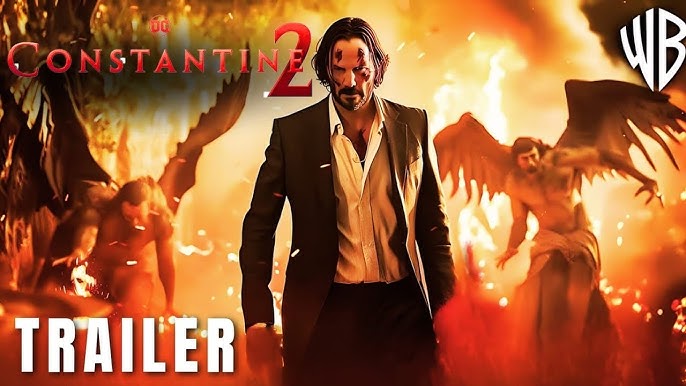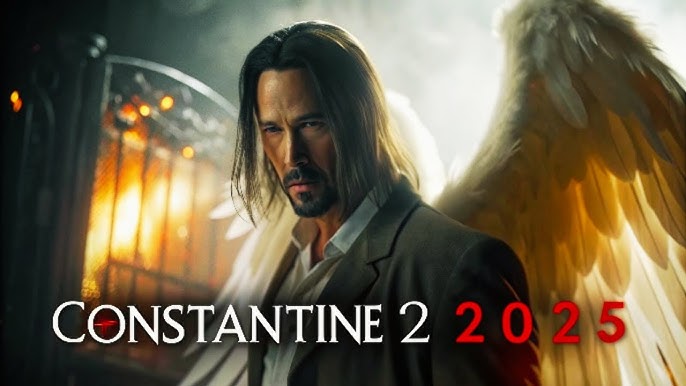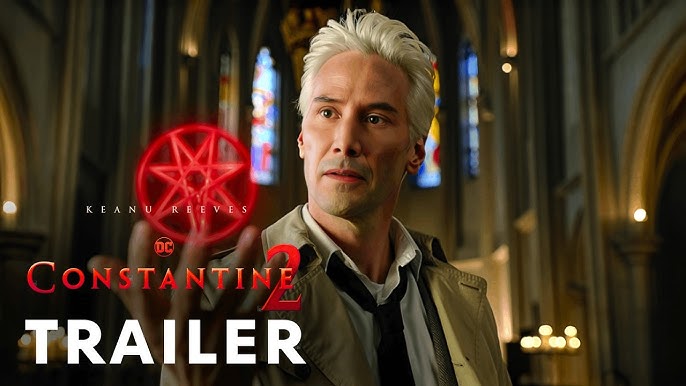Constantine 2 (2025) – The Devil You Know

Constantine 2 (2025) arrives like a storm long foretold — a smoldering, supernatural neo-noir that resurrects one of cinema’s most enigmatic antiheroes. After nearly two decades, Keanu Reeves returns as John Constantine, the world-weary exorcist caught between heaven and hell, light and shadow, faith and cynicism. Directed by Francis Lawrence, the sequel delivers a dark, poetic exploration of damnation and redemption, draped in gothic grandeur and steeped in philosophical fire.
The story begins years after the events of the first film. John Constantine, older and visibly broken, lives in exile in Morocco — chain-smoking his way through a half-life of debt to both sides of eternity. His miracles have become sins, his victories curses. But when a series of apocalyptic omens tear through the world — angels turning to ash, demons weeping blood, and the sky itself splitting with unholy fire — Constantine realizes that the balance between Heaven and Hell has finally collapsed. Something ancient has returned — something even God has abandoned.
Keanu Reeves is nothing short of mesmerizing. His Constantine is quieter now, but every silence is heavy with defiance. Gone is the swagger of youth; in its place stands resignation — the calm of a man who knows damnation personally. Reeves carries the film like a curse, every glance soaked in exhaustion and guilt. His performance radiates both stoic detachment and aching vulnerability, grounding the supernatural chaos in raw humanity.
Rachel Weisz returns in a dual role — both as Angela Dodson, now a Vatican investigator haunted by visions, and as her twin sister Isabel, whose soul Constantine saved years ago. Weisz’s layered portrayal gives the film its emotional spine: a meditation on faith, grief, and rebirth. Their reunion is tender, tragic, and quietly apocalyptic. Between them lingers a love that never was, doomed by divine law.
Laurence Fishburne joins the cast as Ezekiel Thorn, an angel who has fallen by choice — a messenger who rejects Heaven’s indifference and seeks Constantine’s help to rewrite the cosmic order. His presence ignites the film with gravitas and philosophical weight. Meanwhile, Tilda Swinton returns as Gabriel, now imprisoned between realms, her celestial wings rotting as punishment for her hubris. Her scenes with Reeves are electric — two weary beings debating the cost of eternity.
Visually, Constantine 2 is a masterpiece of modern gothic cinema. Lawrence crafts a world that feels drenched in sin and sorrow — cathedrals swallowed by smoke, neon crosses flickering in rain-soaked alleys, and mirrors that pulse with spectral energy. The cinematography by Greig Fraser (The Batman, Dune) blends divine luminescence with infernal decay, creating a visual language where every shadow feels alive.
The film’s middle act is a descent — literally — into a reimagined Hell, rendered not as fire and brimstone, but as an eternal bureaucracy of torment. Constantine navigates endless corridors of the damned, where time loops and memories burn. The design evokes Blade Runner by way of Dante — a nightmare of structure and silence. Here, he encounters Lucifer once more — played with chilling, seductive charm by Peter Stormare — who warns him of a new apocalypse: Heaven itself is dying.
Benjamin Wallfisch’s score is hauntingly beautiful, weaving organ hymns with industrial echoes and ghostly choirs. His music rises like prayer and collapses like thunder, embodying Constantine’s constant tension between salvation and despair. The sound design amplifies every whisper and flame — Hell’s roar balanced against the fragile pulse of a man’s faith.
Thematically, Constantine 2 is less about exorcism and more about absolution. It asks whether redemption is possible for those who have seen too much — for those who fight not out of belief, but defiance. Constantine’s war isn’t against demons; it’s against apathy, divine neglect, and his own reflection. In a world where God is silent and the Devil keeps his promises, John becomes the only force still willing to care — even when caring destroys him.

The action sequences are visceral and operatic. Constantine wields sacred relics like weapons of poetry — a rosary turned into a whip of light, holy water grenades illuminating shadowed catacombs. Each battle feels personal, every victory pyrrhic. The climactic confrontation — set in the ruins of a collapsing church where Heaven and Hell bleed into one — is breathtaking. As Gabriel descends to end humanity’s story, Constantine makes his final bargain: his soul, for silence’s mercy.
The finale is both devastating and transcendent. Constantine’s sacrifice restores the balance, but leaves him stranded between life and death — neither saint nor sinner, simply John. The closing image mirrors the first film’s ending: a grave, a cigarette, a sky that refuses to answer. Yet this time, instead of rage, there’s peace. As the wind lifts the ashes from his hand, we hear his voice: “Maybe faith isn’t about believing… maybe it’s about not giving up when you don’t.”
In conclusion, Constantine 2 (2025) is everything a sequel should be — darker, wiser, and profoundly human. It doesn’t just revisit a cult classic; it elevates it into myth. With breathtaking visuals, soul-scorching performances, and writing that dances between theology and noir, it stands as both an elegy and a resurrection.
He’s not a hero. He’s not a prophet.
He’s just the man who never stopped fighting the dark. 🕯️🔥
Related movies :
Related movies :
Related movies :
Related movies :
Related movies :
Related movies :











